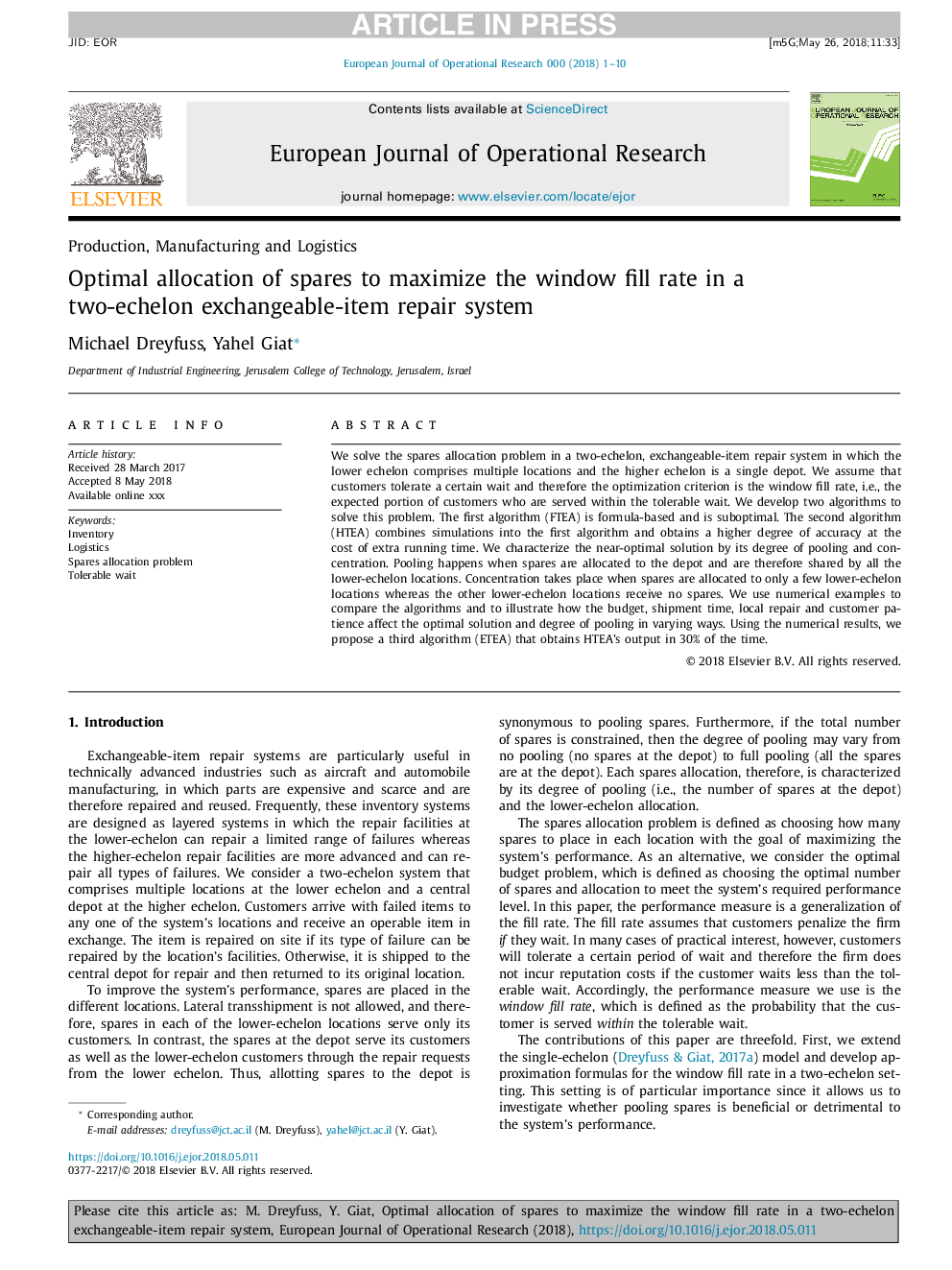| Article ID | Journal | Published Year | Pages | File Type |
|---|---|---|---|---|
| 6894548 | European Journal of Operational Research | 2018 | 10 Pages |
Abstract
We solve the spares allocation problem in a two-echelon, exchangeable-item repair system in which the lower echelon comprises multiple locations and the higher echelon is a single depot. We assume that customers tolerate a certain wait and therefore the optimization criterion is the window fill rate, i.e., the expected portion of customers who are served within the tolerable wait. We develop two algorithms to solve this problem. The first algorithm (FTEA) is formula-based and is suboptimal. The second algorithm (HTEA) combines simulations into the first algorithm and obtains a higher degree of accuracy at the cost of extra running time. We characterize the near-optimal solution by its degree of pooling and concentration. Pooling happens when spares are allocated to the depot and are therefore shared by all the lower-echelon locations. Concentration takes place when spares are allocated to only a few lower-echelon locations whereas the other lower-echelon locations receive no spares. We use numerical examples to compare the algorithms and to illustrate how the budget, shipment time, local repair and customer patience affect the optimal solution and degree of pooling in varying ways. Using the numerical results, we propose a third algorithm (ETEA) that obtains HTEA's output in 30% of the time.
Related Topics
Physical Sciences and Engineering
Computer Science
Computer Science (General)
Authors
Michael Dreyfuss, Yahel Giat,
